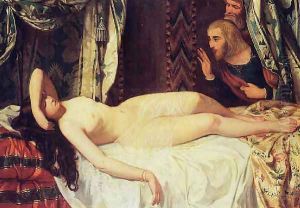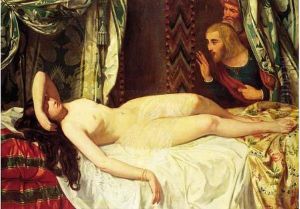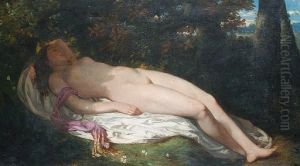Joseph-Fernand Boissard de Boisdenier Paintings
Joseph-Fernand Boissard de Boisdenier, commonly known as Boissard de Boisdenier, was a French painter and illustrator born in 1813 in Tours, France. He is associated with the Romantic movement, which was characterized by its emphasis on emotion and individualism as well as glorification of the past and nature.
Boisdenier was active during a vibrant period of French art, a time when Romanticism was gradually giving way to Realism. He studied under renowned artists such as Antoine-Jean Gros, who was a pupil of Jacques-Louis David and a teacher to other prominent artists like Delacroix. This connection placed Boisdenier in the midst of the artistic developments of his time.
His works encompassed a variety of subjects including historical scenes, religious themes, and portraits. He was particularly interested in dramatic narratives and had a penchant for capturing the emotional intensity within his subjects. His color palette often involved rich, deep hues that contributed to the dramatic effect of his paintings.
Boisdenier exhibited his works at the Paris Salon, the official art exhibition of the Académie des Beaux-Arts in Paris. Exhibiting at the Salon was considered a great honor for artists of the time and played a significant role in establishing their reputations. Boisdenier's works were well received, and he garnered attention for his skillful blend of dramatic content and technical proficiency.
Despite his success, Boisdenier was not as well-known as some of his contemporaries, and after his death in 1866, his name did not resonate as prominently in art history as that of artists like Eugène Delacroix or Théodore Géricault. Nonetheless, his contributions to the Romantic movement are recognized by art historians, and his works are held in collections where they continue to be studied and appreciated for their emotional depth and stylistic qualities.
In summary, Joseph-Fernand Boissard de Boisdenier was a talented artist whose work captured the spirit of the Romantic era. He may not have achieved the lasting fame of some of his peers, but his contributions to the art world during his lifetime were significant, and his legacy endures in the collections that house his works.



